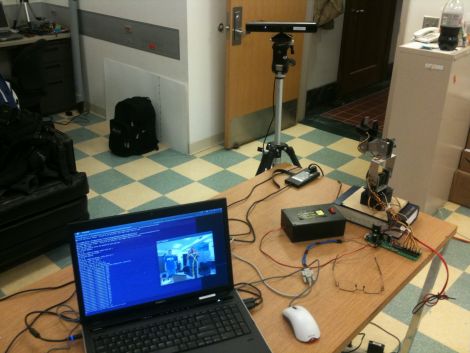Flip-dot displays are grand, especially this one which boasts 74,088 pixels! I once heard the hardware compared to e-ink. That’s actually a pretty good description since both use a pixel that is white on one side and black on the other, depend on a coil to change state, and only use electricity when flipping those bits.
What’s remarkable about this is the size of the installation. It occupied a huge curving wall on the ooVoo booth at 2015 CES. We wanted to hear more about the hardware so we reached out to them they didn’t disappoint. The ooVoo crew made time for a conference call which included [Pat Murray] who coordinated the build effort. That’s right, they built this thing — we had assumed it was a rental. [Matt Farrell] recounts that during conception, the team had asked themselves how an HD video chat for mobile company can show off display technology when juxtaposed with cutting edge 4k and 8k displays? We think the flip-dot was a perfect tack — I know I spent more time looking at this than at televisions.
Join us after the break for the skinny on how it was built, including pictures of the back side of the installation and video clips that you have to hear to believe.













